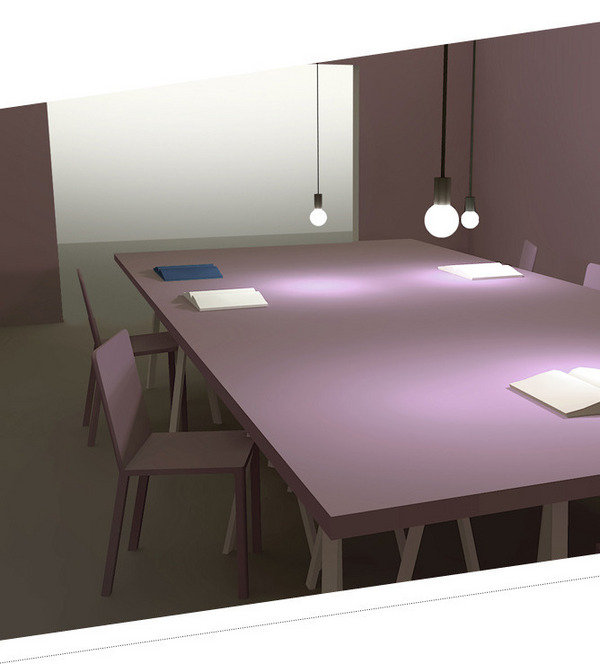Reading rooms / Salons de lecture
dal 2/2/2011 al 2/3/2011
Segnalato da
Edouard Boyer
Bureau d'etudes
Philippe Cazal
Anne-James Chaton
Daniel Gustav Cramer
Marcelline Delbecq
Martine Derain
Krassimira Drenska
documentation celine duval
Ilse Ermen
Jean-Baptiste Farkas
Jochen Gerner
Hoio
Martin Le Chevallier
Jan Mancuska
Claire Morel
Plonk et Replonk
Julien Previeux
Ricardo Rendon
Pedro Reyes
Yann Serandour
Taroop et Glabel
Saliou Traore'
V8
Sandrine Wymann
2/2/2011
Reading rooms / Salons de lecture
Kunsthalle Mulhouse Centre d'art contemporain, Mulhouse
The exhibition does not aim at giving an all-comprehensive survey of the shapes the written form might take on as works of art. It rather aims at thinking about a diversity of shapes that all give rise to the same permanent features: a necessary physical rapport to the work (touching, as much as possible, the works), a state of heightened concentration (reading) and an invitation to take one's time (the time to read).

Curated by Sandrine Wymann
Edouard Boyer, Bureau d'études, Philippe Cazal, Anne-James Chaton, Daniel Gustav Cramer, Marcelline Delbecq, Martine Derain, Krassimira Drenska, documentation céline duval, Ilse Ermen, Jean-Baptiste Farkas, Jochen Gerner, Hoio, Martin Le Chevallier, Jan Mancuska, Claire Morel, Plonk et Replonk, Julien Prévieux, Ricardo Rendon, Pedro Reyes, Yann Sérandour, Taroop et Glabel, Saliou Traoré, V8
A written work of art, a text that becomes a work of art?
Is it a carefully thought of process that can only find accuracy in the written form or is it more the other way around, a work in which the written form is the natural way to express what there is to say, where the concept is the written form. There are as many answers as there are forms, chosen topics or envisaged processes. Studies, reports, stories, graphic research, books, many genres that represent a whole section of contemporary art and give rise to a specific and singular approach.
This exhibition does not aim at giving an all-comprehensive survey of the shapes the written form might take on as works of art. It rather aims at thinking about a diversity of shapes that all give rise to the same permanent features: a necessary physical rapport to the work (touching, as much as possible, the works), a state of heightened concentration (reading) and an invitation to take one's time (the time to read).
Apprehending a written work of art requires a particular mind set on the part of the spectator/reader and this aspect is pivotal in reading rooms. This exhibition awaits the reader, offers him a break and provides the conditions that are necessary to his well-being. Even if the reader does not enter with the intention to read everything, he may, if he so desires, spend the afternoon there. He can take an interest in different approaches, pick at writings and all that in ideal conditions: he is offered a seat, the exhibition calls for him to feel at ease and to get engrossed in his reading.
Reading rooms is divided into genres. Far from following hard and fast rules, this categorization is to be considered rather as a way to observe the different patterns the use of the written word follows. This division is openly subjective and proclaims it porous borders; it is in no way exclusive.
Historical room
The historical room brings together artists and artistic trends that have worked from the twentieth century onwards on the book, its different shapes, its uses, its limitations and disappearance.
Rereading room
Rereading is to use an existing text or visual element to new ends that are entirely disconnected from their original meaning.
Process room
Artists who use process to describe what surrounds them better and who question what is usual often resort to the re-use of shapes, phrases, and even forms by pushing them to their limit
Books room
A book is the archetypal medium for a text, the shape we spontaneously associate with the written form. The ones the Salon livre (Book room) gathers share the particular feature of being in keeping with both the history of the book and art history.
Narrative room
This room's artists use the narrative form to keep the textual form and to explore the to and fro movement between the mental images it evokes and the ready-made image, the cliché that pre-existed within our psyches before we encountered their work
Documentary room
The documentary room brings writings that come from "political art" together. Magazines, newspapers, books, index cards are all media they choose to give their testimony of information.
La Kunsthalle is supported by : the town of Mulhouse, the Departement du Haut-Rhin, the Region Alsace and the Direction Regionale des Affaires Culturelle d'Alsace.
The exhibition includes performances: February 2nd, 8PM /
Mission Kaki - Hektor Maille tracks Dr. Hing - a travel adventure in episodes, HOIO / The Journalist and Transfer Anne-James Chaton, Andy Moor
March 15th , 8PM /
Locus Metropole, John Giorno, Jürgen O.Olbrich, Michel Collet
For further information : clarisse.schwarb@mulhouse.fr
Opening February 2nd, 8PM
La Kunsthalle Mulhouse
Centre d'art contemporain, La Fonderie
16, rue de la Fonderie, 68093 Mulhouse Cedex



